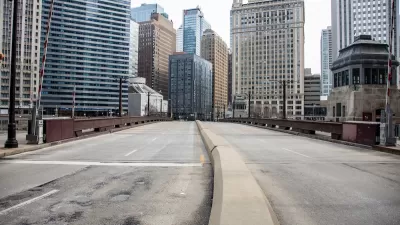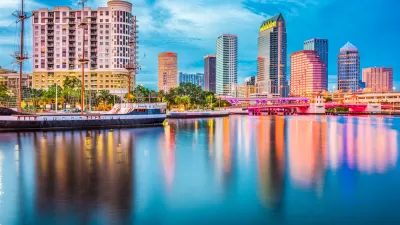A Brookings Institution study reveals that crime rates in major cities have risen, but downtown districts account for a negligible part of the growth.

According to a study from the Brookings Institution, fears about safety in U.S. downtowns are not based in fact. As Jake Blumgart explains in The Philadelphia Inquirer, the authors “ found that across the four cities, downtowns accounted for an almost negligible share of total citywide property and violent crime.”
While violent crime rates are at a high in other parts of Philadelphia, for example, the Center City neighborhood remains safer than others, accounting for only 1 percent of the growth in property crime between 2019 and 2022. Of the four cities in the study, Seattle was the only one with a higher rate of violent and property crimes downtown. In the others, the share of crimes occurring downtown remained the same or, in Philadelphia’s case, went down.
The study notes that a rise in visible homelessness and drug use, driven in part by lower foot traffic and vacant storefronts, influences the overall sense of unease felt by many urban residents, but points out that “people living on the street are more likely to suffer crime than to commit it.”
When it comes to violent crimes in Philadelphia, the study highlights the patterns that existed pre-pandemic. “Those crimes are almost wholly not taking place in Center City, but in systemically disadvantaged neighborhoods where much of the violence took place before the pandemic — and where it’s since become far worse.”
The study outlines recommended solutions that can improve safety, such as lighting and other infrastructure. According to researcher Hanna Love, “The best use of public funds would be investments in safety infrastructure in the higher-crime neighborhoods, rather than, say, adding a bunch more police officers [downtown].”

Study: Maui’s Plan to Convert Vacation Rentals to Long-Term Housing Could Cause Nearly $1 Billion Economic Loss
The plan would reduce visitor accommodation by 25,% resulting in 1,900 jobs lost.

North Texas Transit Leaders Tout Benefits of TOD for Growing Region
At a summit focused on transit-oriented development, policymakers discussed how North Texas’ expanded light rail system can serve as a tool for economic growth.

Using Old Oil and Gas Wells for Green Energy Storage
Penn State researchers have found that repurposing abandoned oil and gas wells for geothermal-assisted compressed-air energy storage can boost efficiency, reduce environmental risks, and support clean energy and job transitions.

Private Donations Propel Early Restoration of Palisades Playground
Los Angeles has secured over $1.3 million in private funding to restore the Pacific Palisades playground months ahead of schedule, creating a modern, accessible space that supports community healing after recent wildfires.

From Blight to Benefit: Early Results From California’s Equitable Cleanup Program
The Equitable Community Revitalization Grant (ECRG) program is reshaping brownfield redevelopment by prioritizing projects in low-income and environmental justice communities, emphasizing equity, transparency, and community benefits.

Planting Relief: Tackling Las Vegas Heat One Tree at a Time
Nevada Plants, a Las Vegas-based nonprofit, is combating the city’s extreme urban heat by giving away trees to residents in underserved neighborhoods, promoting shade, sustainability, and community health.
Urban Design for Planners 1: Software Tools
This six-course series explores essential urban design concepts using open source software and equips planners with the tools they need to participate fully in the urban design process.
Planning for Universal Design
Learn the tools for implementing Universal Design in planning regulations.
Ascent Environmental
Borough of Carlisle
Institute for Housing and Urban Development Studies (IHS)
City of Grandview
Harvard GSD Executive Education
Toledo-Lucas County Plan Commissions
Salt Lake City
NYU Wagner Graduate School of Public Service





























